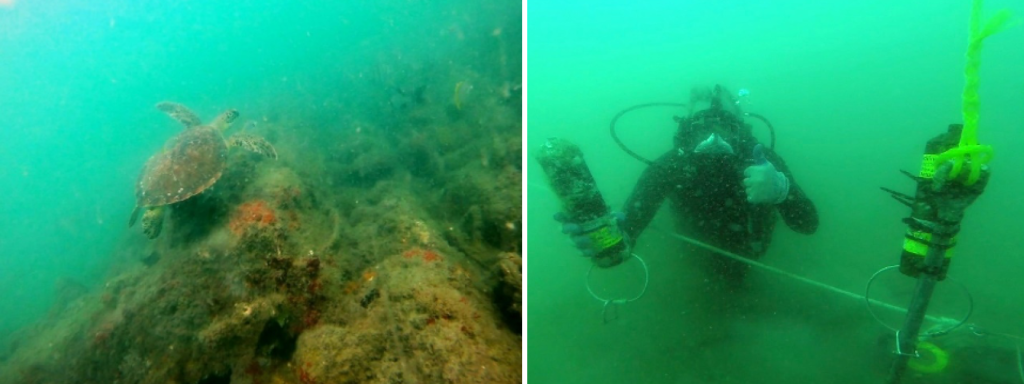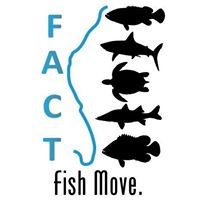
Project Overview
The east-central Florida coast is a popular area for residents and tourists that enjoy the sand and surf of this moderately-populated area. In Brevard County, an isolated shallow nearshore reef resides from the shoreline out to approximately 150 m along a 14.5-mile stretch of beach. East Coast Biologists, Inc. began a study of the marine turtle population using the nearshore hardbottom reefs in this area in 2003. Researchers observed juvenile green turtles and, occasionally, a loggerhead sea turtle over the nearshore reefs. Preliminary genetic research conducted by University of Georgia’s Warnell School of Forestry and Natural Resources indicates that the natal origin of the juvenile green turtle population sampled from this area were hatched from as far away as beaches in Costa Rica. To better understand the importance of this habitat, researchers placed acoustic transmitters on 15 juvenile green turtles to learn whether turtles are “residents” or “transients” just passing through. Results of acoustic tracking and recapture data indicated juvenile green turtles use this nearshore habitat anywhere from 30 days to a year or longer. The focus of the current acoustic study is to determine if and how juvenile green turtles use recently deployed (2019) artificial reefs that were designed to mitigate possible impacts to nearshore reef habitat caused by beach nourishment.
Why this matters
One of the greatest threats to the recovery of threatened and endangered sea turtle species is the loss of adequate habitat necessary for foraging, shelter, and refuge from predators. This study examines the viability of using artificial reefs to help mitigate for sea turtle habitat impacted by shoreline restoration and beach nourishment activities. Data from these studies help inform coastal managers and policymakers on the effectiveness of artificial reef design and structure for sea turtles.
Lead Organizations
Partners
- Brian Shamblin, PhD, University of Georgia Warnell School of Forestry and Natural Resources
- Eric Reyier, PhD, Kennedy Space Center Ecological Monitoring
Supported by
Project Status
- Ongoing
Contact
Resources & Publications
- Islands in the Sand: Ecology and Management of Nearshore Hardbottom Reefs of East Florida. (Book) Springer Nature.
- East Coast Biologists Inc. (2015) “Resident or transient?” Gaining ground on the function of nearshore hardbottom for juvenile green turtles (Chelonia mydas) through collaborations with the FACT (Florida Atlantic Coast Telemetry) Array. Florida Sea Turtle License Plate Grant #12-047R
- Holloway-Adkins KG (2006) Juvenile green turtles (Chelonia mydas) foraging on a high-energy, shallow reef on the East Coast of Florida, USA. In: Frick M, Panagopoulou A, Rees AF, Williams K (eds) 26th Annual Symposium on Sea Turtle Biology and Conservation. Athens, Greece, p 193
- Holloway-Adkins KG, Provancha JA (2005) Abundance and foraging activity of marine turtles using nearshore rock resources along the Mid Reach of Brevard County, Florida. Report to Olsen Associates, Inc. for Brevard County. Suppl. EIS. Viera. Appendix K:p 45
FACT Tag Codes
ECBMIT
ECBNEAR
FACT Array Codes
ECB
